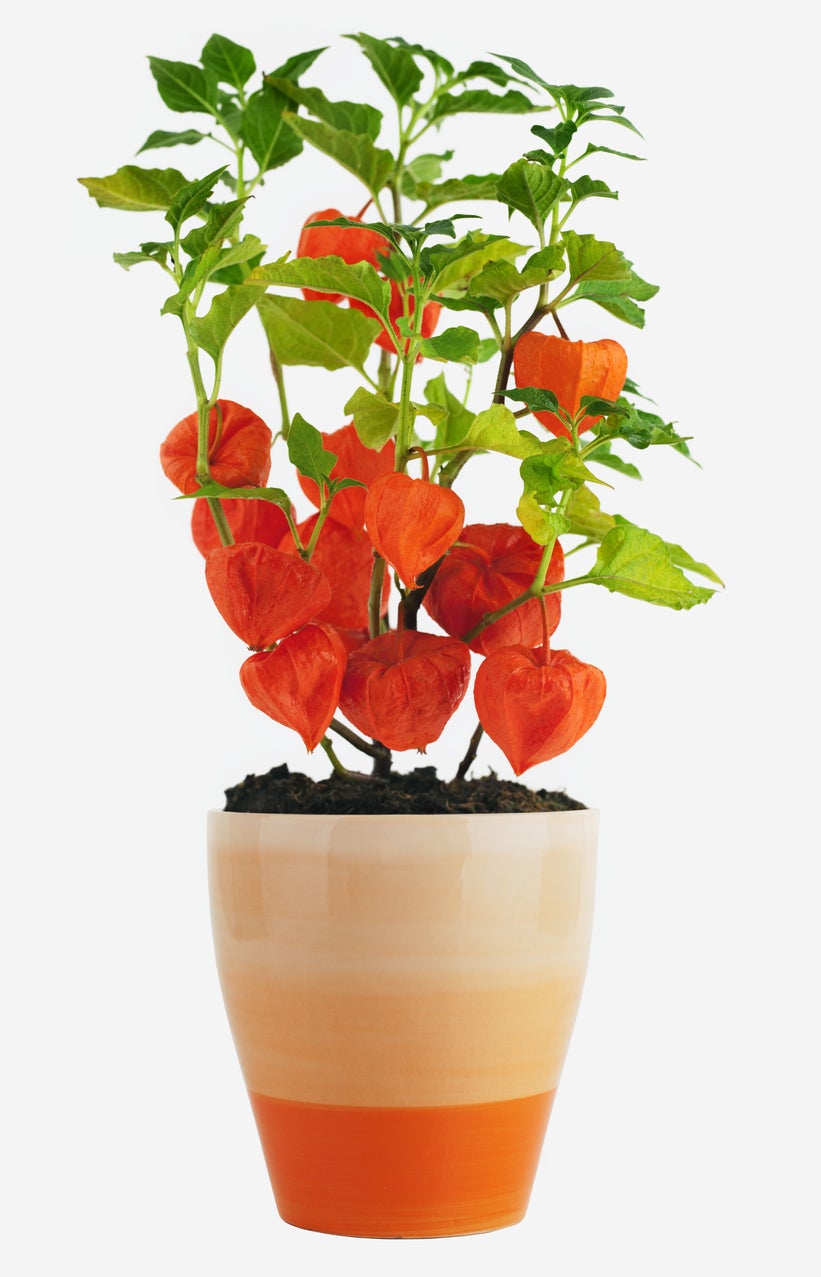Container Grown Chinese Lantern – How To Grow A Chinese Lantern Plant In A Pot


Growing Chinese lanterns can be a challenging project. One easier method when growing this specimen is having your Chinese lantern plant in a pot. This contains the invasive rhizomes in most cases. However, roots of Chinese lantern plants in a container have been known to escape through drainage holes in the pot, so an occasional root pruning may be necessary. Read on for more information on potted Chinese lanterns.
Growing Chinese Lantern in a Container
Attractive, glossy heart-shaped foliage combines with detailed pods in yellow and orange, turning red and closely resembling a Chinese lantern. These are great additions when creating colorful, autumn decorations and accents. The papery pods are textured much like their namesake. These are called calyxes, which initially are green. Insignificant white flowers bloom before calyxes develop.
It is a great plant to grow but is not without its challenges. Learning how to keep the roots in the container is usually solved by fine mesh wire over the drain holes. And, of course, start with a big container so you won’t have to repot for a while. The container may be buried in the ground to give the appearance that Chinese lanterns are growing in a bed.
Dropping seed is another way this plant gets started on its invasive journey. Small fruits containing seeds grow inside the pods. Remove pods that begin to disintegrate and properly dispose of the seeds therein. If you bury a pot of them, you may spread landscape cloth around it and try to collect seeds as they fall. Birds sometimes carry seeds to other parts of the landscape too. Container-grown Chinese lanterns help diminish the chance of its escape but don’t eliminate it completely.
Watch this plant regularly for pests and disease and be prepared with neem oil or insecticidal soap. It is bothered by a number of destructive beetles. Fungal and bacterial diseases are often a problem for potted Chinese lanterns. Plant so there is air flow between the plants to help avoid such issues. Don’t overwater this container plant. Let the top inch (2.5 cm.) of soil dry before watering again.
Prune out dead or dying foliage. Also, as previously mentioned, root pruning can help control overzealous root growth while reducing the need to continually repot. Clean pruners between cuts to avoid spreading disease. Divide container-grown Chinese lanterns in spring. Protect containers during winter so the plants will return once outdoor temps begin to warm back up.
Harvest the lanterns by cutting the stalk at the ground. Bundle a few together and hang upside down to dry in a dark, dry spot. Place something below them to catch dropping seeds. Seeds may be replanted in containers for another crop.
Sign up for the Gardening Know How newsletter today and receive a free copy of our e-book "How to Grow Delicious Tomatoes".

Becca Badgett was a regular contributor to Gardening Know How for ten years. Co-author of the book How to Grow an EMERGENCY Garden, Becca specializes in succulent and cactus gardening.